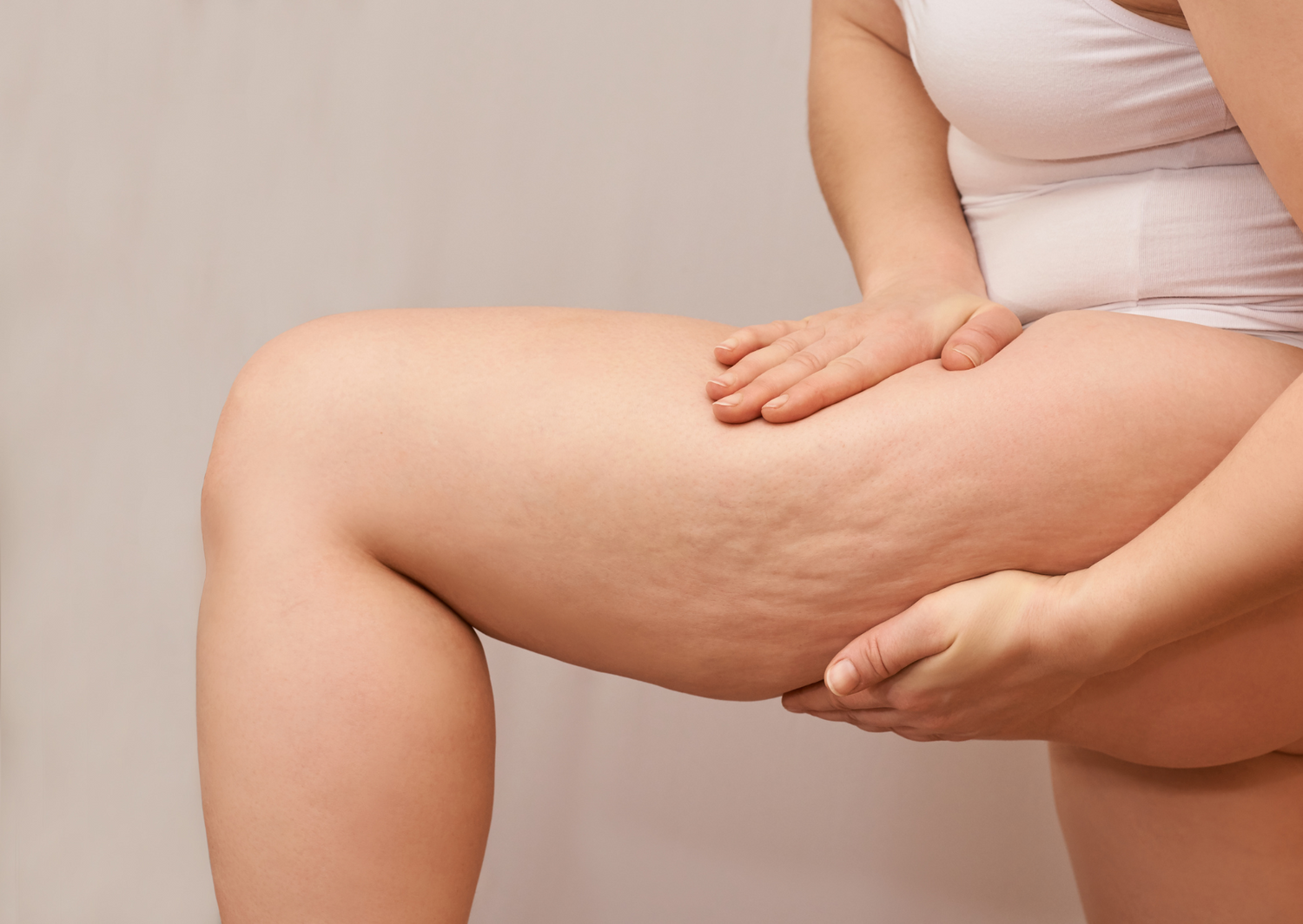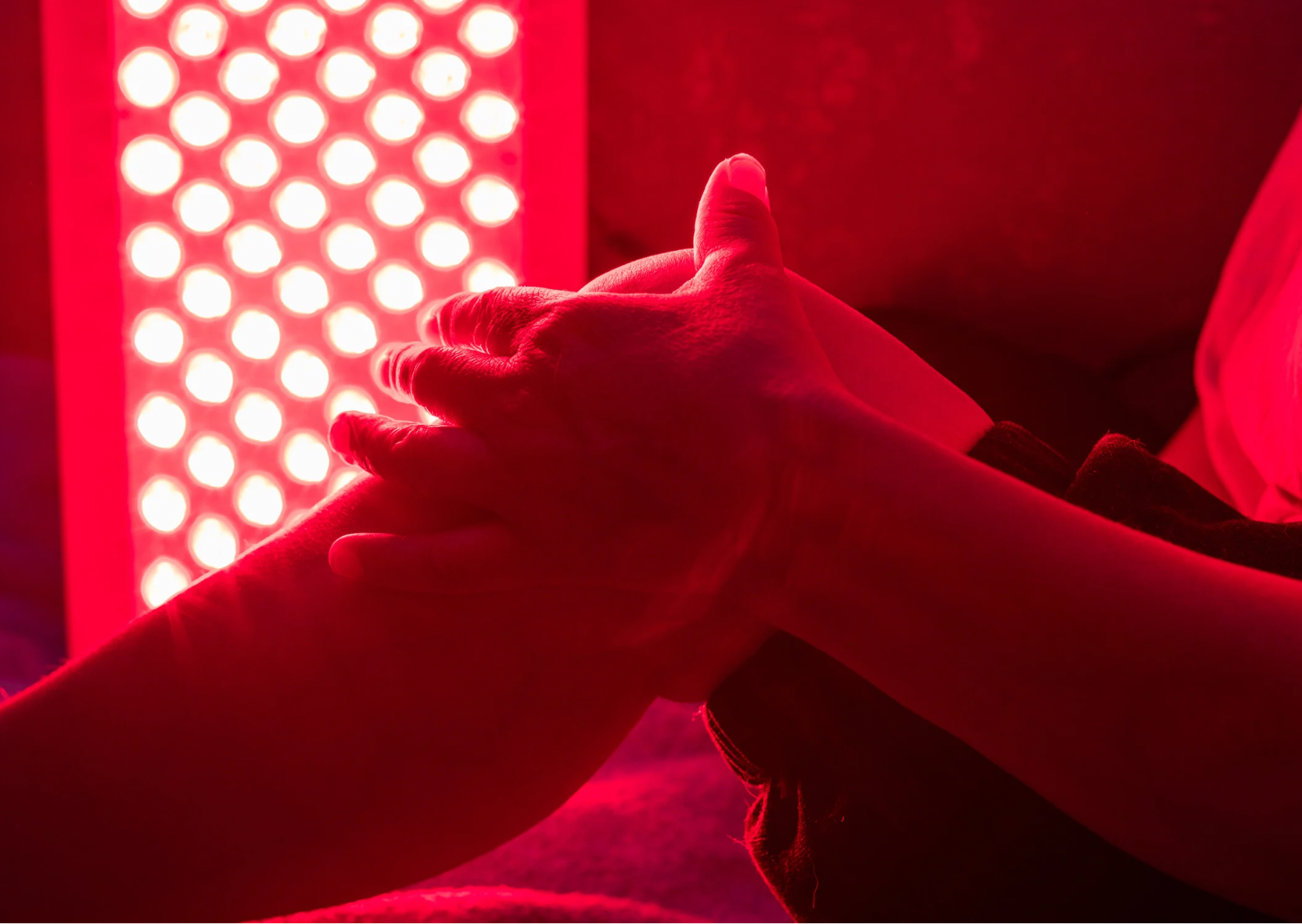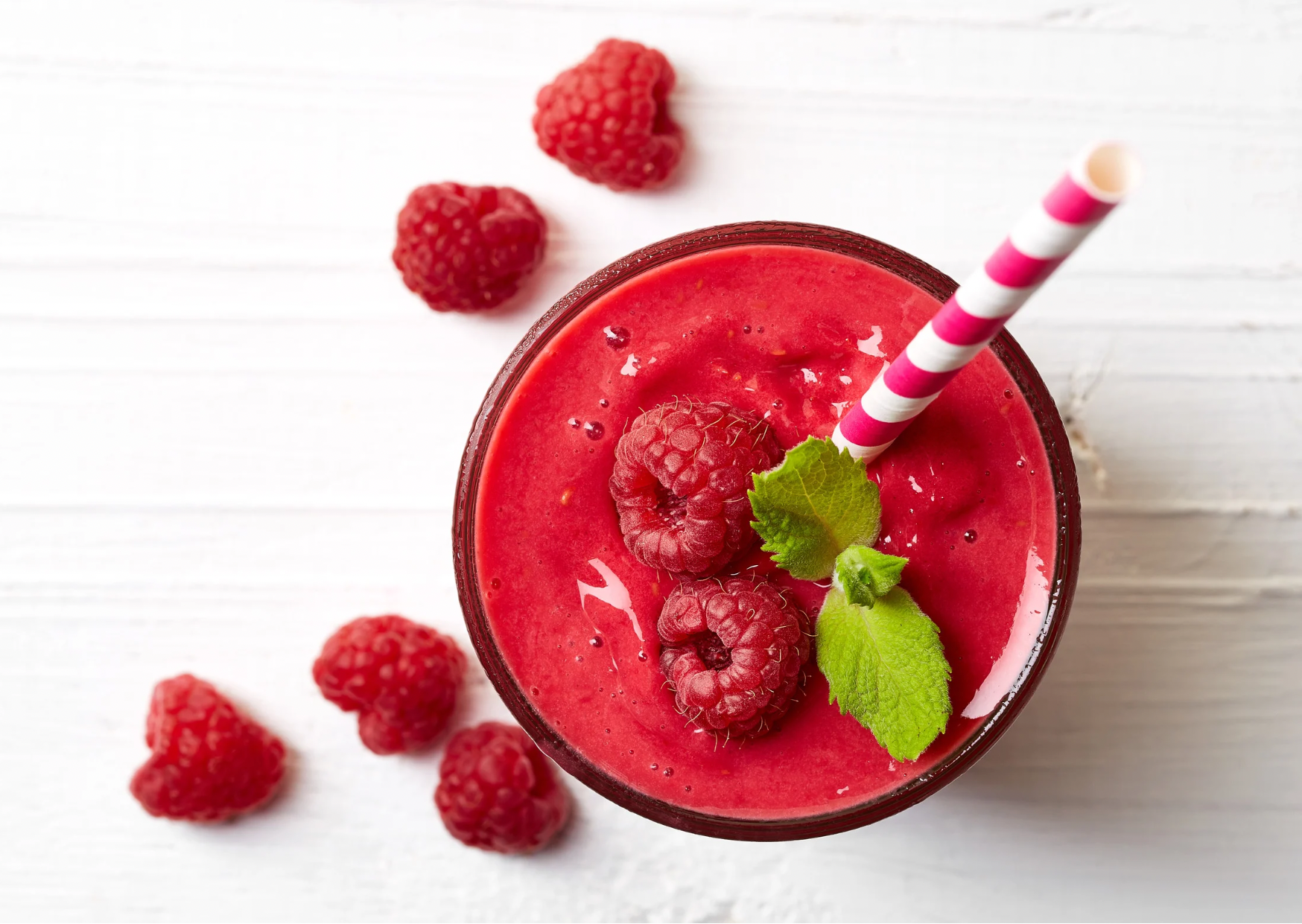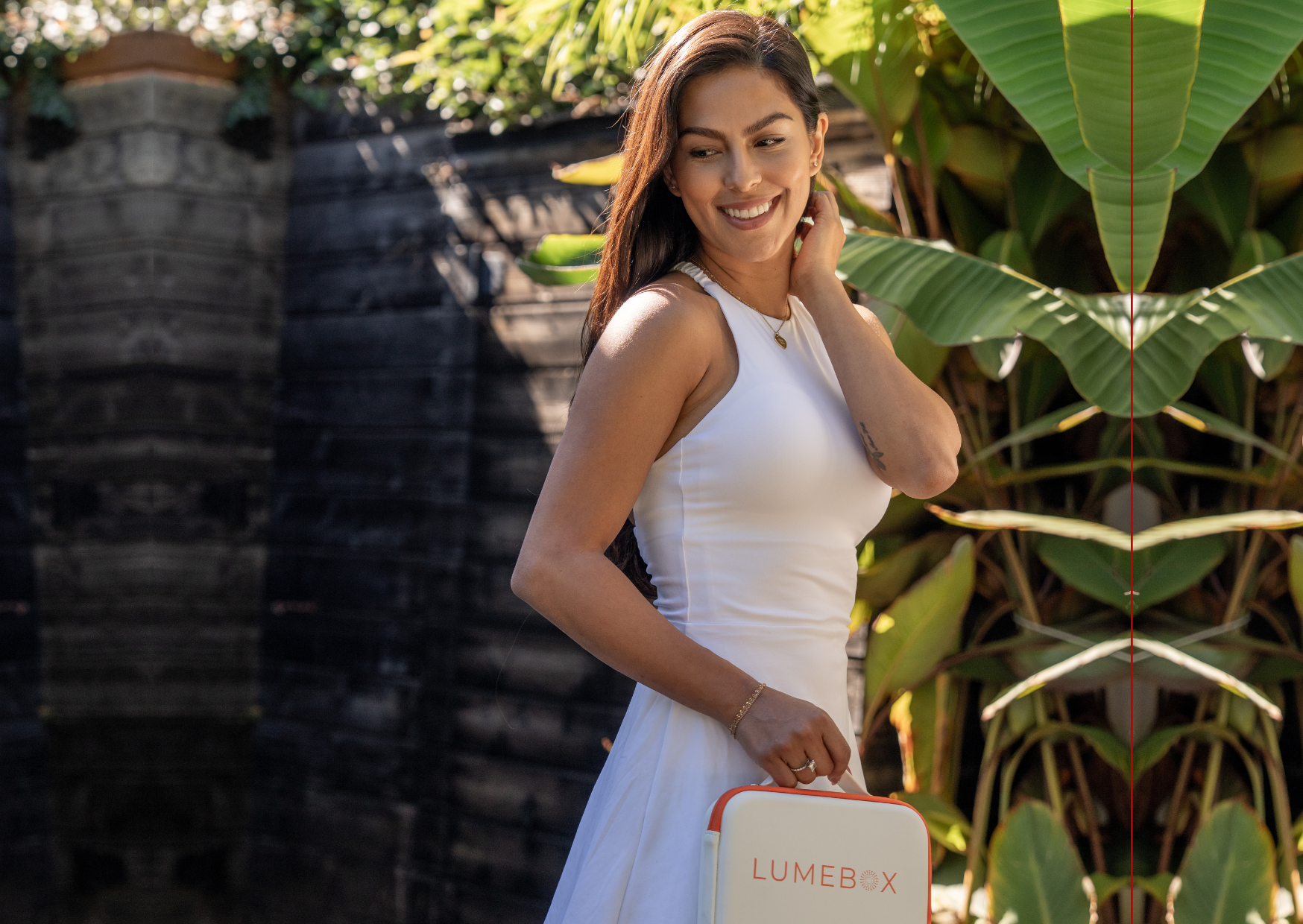Embracing and cherishing your unique self, both inside and out, is a beautiful and empowering journey. Many of us struggle with accepting how our bodies look, often forgetting that the individual beauty and strength we each possess goes beyond mere aesthetics.
However, it’s hard to miss the flood of product headlines promising rapid fat loss, especially as the weight and fat loss industry soared to a staggering $160 billion valuation in 2023. From diet culture to weight loss pills and liposuction, they’ve tried it all.
With so much information out there, does anyone else feel overwhelmed about where to start?
Us too! Strict diets and intense workout routines can be daunting and often yield unsatisfactory long-term fat reduction results.
So, we’re here to illuminate a new path… Learn with us as we journey towards a leaner, fitter self!
When we talk about fat loss, what type of fat do we want to lose?
In fat loss, we want to ensure we're losing the right kinds of fat while maintaining healthy levels of the fat we need. There are different types of fat in our bodies, each serving unique roles…
Essential fat is vital for bodily functions like regulating temperature and hormone production - women want to keep this more than men [1]! Essential fat is found in the brain, bone marrow, nerves, and around the organs, and also makes up a percentage of subcutaneous fat, depending on the individual.
Visceral fat is bad fat that surrounds our organs. Too much can be harmful [2]. correlating with serious health issues like insulin resistance and heart disease.
Subcutaneous fat is what most people know fat to be - fat under the skin that's thicker in areas like the thighs, arms, under the chin, belly fat, and so on. It’s the fat most people want to lose to change their body contours and appearance.
So, when considering fat loss, most people are usually trying to lose subcutaneous fat. But what they don’t realize is that visceral fat may be more detrimental to our health.
It's important to remember that adopting a healthier lifestyle generally has a positive impact on our internal, visceral fat composition as well, enhancing our overall well-being!
Have cellulite?
Cellulite is commonly discussed in terms of unwanted appearance, but it's important to understand that it can be a normal and common aspect of how our bodies are structured (85% of women over the age of 20 experience it!) [3].
How it forms: subcutaneous fat is found under the skin, separated from the skin by a thin layer of collagen. A natural interaction between subcutaneous fat pushing up against the skin and cords of connective collagen tissue pulling down can create a dimpling appearance of the skin layer, commonly known as cellulite.

Most often, cellulite formation around the thighs, buttocks, and hips, is caused and accelerated by:
- Unhealthy collagen
- Excess subcutaneous fat in the fat cells of that area (fat cells appear enlarged)
- Weakened connective tissue
- Poor blood circulation
- Inflammation of fat cells and connective tissue
Cellulite can be frustrating because it's influenced by less controllable factors like hormones and genetics. In some women, certain genetic patterns of fat storage might lead to more cellulite, even in those who have a lower BMI or are physically fit and active.
Women bear the brunt of cellulite more than men, largely due to natural differences in skin thickness and fat storage patterns - women have more subcutaneous fat, whereas men predominantly store fat in the abdominal region.
Why are some areas so much harder to lose fat than others?
1. Poor blood flow
Some areas of the body (thighs and hips for women) receive poorer blood flow than other areas. Without sufficient circulation, these fat cells struggle to release their fatty contents into the blood, which could be used for energy.
2. Uneven distribution of receptors
Fat cells in some areas of the body have more alpha receptors than beta receptors - the alpha receptors tell the cells to store more fat rather than break it down for immediate use. So, if you’ve ever tried to lose fat, you might’ve found that some areas of the body are just more stubborn than others. Many women experience this effect on the upper thighs for instance.
3. Fat stores are hyper-sensitive to insulin
Insulin is the key that unlocks the door to cells, allowing more sugar from the blood to enter and be used for energy.
After we digest food, sugar enters the bloodstream, and insulin levels rise, directing the cells to take up this sugar.
The cells either use this sugar for energy or convert it into fat for storage (if it is not burned off immediately). The latter causes fat cells to get bigger, leading to a more undulating appearance of the skin, also known as cellulite.
4. Fat may be our body’s way of storing unwanted toxins
Studies have shown that during rapid weight loss, blood levels of toxins like pesticides can increase[4] - suggesting that holding onto fat might be a protective mechanism used by our bodies. To lose fat effectively, we may need to support our detox organs and lower the overall toxic load in the body (NOT through gimmicky detox supplements, but through daily bowel movements, sweating, and liver-supporting foods like broccoli).
The appeal of Red Light Therapy
Red Light Therapy (RLT) is particularly intriguing for its potential to improve the appearance of fat on our bodies. Unlike traditional methods which are often expensive, it may offer a non-invasive, side-effect-free approach.
Most studies so far have been done using laser therapy, but there are a few using red and near-infrared light from LEDs, which you can read more about in the section below.
How might it work?
Dr. Hamblin has extensively reviewed the literature, and proposes the following hypotheses for Low-Level Laser Therapy’s (LLLT) potential to reduce fat and cellulite [5] through two main mechanisms:
- The “production of transient pores in adipocytes, allowing lipids to leak out”.
- The “activation of the complement cascade which could cause induction of adipocyte apoptosis and subsequent release of lipids”. [5]
To explain the scientific jargon above, essentially he is saying RLT may help fat loss by:
- Creating temporary tiny openings in fat cells, which lets the fats inside them leak out
- Triggering a process in the body that can lead to the self-destruction of fat cells, releasing the fats stored in them. [5]
Here are the studies:
Fat reduction and the appearance of cellulite:
-
A multi-center randomized control study [6] assessed how red light can help reduce fat and cellulite when combined with other modalities such as vacuums and massages.
In 83 women with mild to moderate cellulite, they applied a low-level, dual-wavelength LED and laser massage device (650 nm LED - this is red, and 915 nm - this is NIR) with rollers integrated to “manipulate and smooth the skin to facilitate fluid and fat mobilization and enhance lymphatic drainage as well as microcirculation”.
One thigh was treated, and the other served as a control.
On the treated thigh, each person received 15 minutes on the front and back of each thigh, covering 80 square inches (total 30 minutes per treatment) at a maximum power setting of 10 W (this is 1/15th of the power of LUMEBOX). Sessions were conducted twice weekly for 4 weeks. Regular measurements were taken of the upper, middle, and lower thigh circumference. At 1 month, “the maximum reduction (–0.82 cm) occurred in the upper thigh” and “71% of the treatment thighs lost circumference compared to 53% of the control thighs”.

Clinical photos were also taken - see for yourself the decrease in the appearance of cellulite!

-
In one of the first studies observing the effect of LED light during exercise on cellulite, 20 women were split into two groups - one committed to 45 minutes of high-intensity treadmill training, and another who did the same exercise but also received LED light for the full 45 minutes while exercising [7]. They wore a bikini (and goggles!) to ensure infrared light was absorbed through bare skin. NIR was delivered at 850 nm, positioned 15 cm from thighs and buttocks, reaching an average power density of 39 mW/cm2 on the skin (this irradiance is comparable to what you’d get from LUMEBOX).
The process was completed twice weekly for 3 months, and throughout the treatment, body composition was evaluated, and photos were taken.
“According to the researchers’ observations and the reports of the women who performed the infrared LED plus treadmill training, the skin became smooth, soft, and rejuvenated. Some patients’ remarks: “My husband asked if I was using a new cream”, “My skin is smooth and soft”, “My cellulite regressed”. The infrared LED “resulted in a significant reduction of the perimeter of the saddlebags and thighs, as well as an improvement of the skin texture (buttocks and thigh)”.

What’s also interesting is that thermal images were taken. The authors wrote that “in our study, these images indicated increased metabolic activity for the LED group because the infrared-LED resulted in significant temperature increases during the exercise and the images of the control group showed decreases. These results are in line with other studies.”

-
In a double-blind, randomized, placebo-controlled trial - the gold standard type of study - 67 people received red light laser treatment at 635 nm (red, laser). Fat reductions across the waist, hips, and thighs were measured.
At the end of treatment, “participants in the treatment group demonstrated an overall reduction in total circumference across all three sites of 3.51 inches” [8].
Note: this study was conducted using laser therapy. No conclusions can be drawn about LED-based technologies from this specific paper.
Supporting collagen:
We noted how important healthy collagen is for a smooth skin appearance and therefore may indirectly improve the appearance of cellulite.
Here are some studies on red light and collagen density:
- A randomized control study had 113 volunteers treated twice weekly for 15 weeks with RED or both RED and NIR light (LED at 5 - 25 mW/cm2 irradiance, ⅕ of LUMEBOX irradiance) to their face. Compared to the control group, those who received treatment experienced significant improvements in skin complexion and feeling (evaluated with photography and patient satisfaction), roughness (through digital profilometry), and collagen density (measured using ultrasound). [9]

-
A single-blind study investigated the potential for 660 nm (red) LEDs as a safe and effective collagen-enhancement strategy. [10]
The study had two parts; 1) LED-induced biochemical and histological changes in an in vitro model were first examined, then 2) a clinical study was carried out to assess in vivo the correlation of light treatment with skin texture and appearance of individuals with aged/photoaged skin.
The results were as follows: over 1 month, “an increase in type I procollagen production (31% increase) with an associated decrease in MMP-1 levels (-18%) was observed in the LED-treated samples when compared with that in untreated samples”. MMP-1 is an enzyme known to break down collagen in our skin. So the implication is that a lower MMP-1 will allow LESS collagen breakdown - desirable if you want more collagen.
To follow, the in vivo results showed that participants receiving 12 total treatments of LED and sham light in a split-face design showed wrinkle severity and depth reduction of 51%. “Overall, an improvement in skin appearance after LED treatment was observed in 97% of participants”.
This is NOT Laser Liposuction
You might’ve heard about the various other methods of fat removal on the market that directly remove fat from the body. Laser liposuction and cryotherapy (freezing of fat cells) remove fat cells completely. Fat cells do not replicate and rather grow in size, so removing them completely sounds like an attractive option, right?
Unfortunately, liposuction can lead to contour irregularities [11] leaving the body with a disproportionate look [12]. What’s more, these treatments won’t help you feel your best self or improve your overall well-being, whereas lifestyle changes like exercise, healthy eating, and red light therapy may!
5 easy action items you can start today:
The good thing is, there’s a LOT you can do to get your body in its best shape. We have some tips below that don’t just come down to diet and exercise!
1. Focus on Sleep and your Circadian Rhythm🌛
Sufficient sleep is crucial for managing inflammation, hunger levels and cravings [13], and supporting gut health, which is linked to weight management [14].
Less than an hour of morning daylight exposure can significantly influence our circadian rhythm. 45 minutes of light exposure early in the day has shown connections with weight and fat loss [15], and morning light has also been associated with reduced BMI [16]. 🌞
2. Red Light Therapy Paired with Exercise 🏋🏻♀️
Incorporating exercise into your routine not only burns calories but also strengthens the heart and metabolism, and improves overall physical and mental well-being. When combined with red light therapy - particularly in the near-infrared range as you saw in the study above - there is evidence that the two together may help manage insulin and blood sugar, increase muscle mass, and decrease adipose tissue, or body fat, simply put [17].
3. Balance blood sugar 🩸
Chronically elevated blood sugar can compromise collagen as the sugar in our blood attaches to proteins in the tissue, making the skin less elastic, and causing inflammation. More inflammation draws in more water, worsening the appearance of cellulite.
Here are 3 things you can do to help regulate blood sugar:
- Dress your carbs! What we mean by this: you’re looking at your dinner plate and the pasta looks so tempting. But FIRST - reach for the veggies, protein, and healthy fats before digging in to the refined carbohydrates. There’s a reason why we eat dinner before dessert!
- Add cinnamon, cloves, oregano, allspice, ginger, and garlic to your dishes! All these spices have been shown to reduce the effects of high glycemic index foods on the skin [18].
- Help your cells use up excess sugar (before they convert it into fat) by moving after your meal. A short 5-minute stroll is all it takes [19].
4. Dry Brush Cellulite Areas 🔄 🧼
While there is little scientific evidence that dry brushing gets rid of cellulite, it is a quick and easy option to help improve blood flow to certain areas of the body, and detoxify at the same time. The best time for this is before a shower. If you’re lucky, a massage does a similar trick. [6, 20]
5. Hydrate Well 💧
To aid this, decrease alcohol consumption! Alcohol stimulates lipogenesis and causes body dehydration, leading to excessive and improper fat storage [3].
Together, these actions pave the way towards a healthier, more balanced lifestyle.
New to red light therapy? Download our free eBook to help you choose the best device.
Already have a LUMEBOX? Download our 6 time-saving tricks guide!
References:
- CDC: Healthy Weight, Nutrition, and Physical Activity https://www.cdc.gov/healthyweight/assessing/bmi/adult_bmi/index.html
- Després J. P. (2006). Is visceral obesity the cause of the metabolic syndrome?. Annals of medicine, 38(1), 52–63. https://doi.org/10.1080/07853890500383895
- Tokarska, K., Tokarski, S., Woźniacka, A., Sysa-Jędrzejowska, A., & Bogaczewicz, J. (2018). Cellulite: a cosmetic or systemic issue? Contemporary views on the etiopathogenesis of cellulite. Postepy dermatologii i alergologii, 35(5), 442–446. https://doi.org/10.5114/ada.2018.77235
- Jackson, E., Shoemaker, R., Larian, N., & Cassis, L. (2017). Adipose Tissue as a Site of Toxin Accumulation. Comprehensive Physiology, 7(4), 1085–1135. https://doi.org/10.1002/cphy.c160038
- Avci, P., Nyame, T. T., Gupta, G. K., Sadasivam, M., & Hamblin, M. R. (2013). Low-level laser therapy for fat layer reduction: a comprehensive review. Lasers in surgery and medicine, 45(6), 349–357. https://doi.org/10.1002/lsm.22153
- Gold, M. H., Khatri, K. A., Hails, K., Weiss, R. A., & Fournier, N. (2011). Reduction in thigh circumference and improvement in the appearance of cellulite with dual-wavelength, low-level laser energy and massage. Journal of cosmetic and laser therapy : official publication of the European Society for Laser Dermatology, 13(1), 13–20. https://doi.org/10.3109/14764172.2011.552608
- Paolillo, F. R., Borghi-Silva, A., Parizotto, N. A., Kurachi, C., & Bagnato, V. S. (2011). New treatment of cellulite with infrared-LED illumination applied during high-intensity treadmill training. Journal of Cosmetic and Laser Therapy, 13(3), 166–171. https://doi.org/10.3109/14764172.2011.594065
- Jackson RF, Dedo DD, Roche GC, Turok DI, Maloney RJ. Low-level laser therapy as a non-invasive approach for body contouring: a randomized, controlled study. Lasers Surg Med. 2009 Dec;41(10):799-809. doi: 10.1002/lsm.20855. PMID: 20014253.
- Wunsch, A., & Matuschka, K. (2014). A controlled trial to determine the efficacy of red and near-infrared light treatment in patient satisfaction, reduction of fine lines, wrinkles, skin roughness, and intradermal collagen density increase. Photomedicine and laser surgery, 32(2), 93–100. https://doi.org/10.1089/pho.2013.3616
- Barolet, D., Roberge, C. J., Auger, F. A., Boucher, A., & Germain, L. (2009). Regulation of skin collagen metabolism in vitro using a pulsed 660 nm LED light source: clinical correlation with a single-blinded study. The Journal of investigative dermatology, 129(12), 2751–2759. https://doi.org/10.1038/jid.2009.186
- Dixit, V. V., & Wagh, M. S. (2013). Unfavourable outcomes of liposuction and their management. Indian journal of plastic surgery : official publication of the Association of Plastic Surgeons of India, 46(2), 377–392. https://doi.org/10.4103/0970-0358.118617
- Benatti, F. B., Lira, F. S., Oyama, L. M., do Nascimento, C. M., & Lancha, A. H., Jr (2011). Strategies for reducing body fat mass: effects of liposuction and exercise on cardiovascular risk factors and adiposity. Diabetes, metabolic syndrome and obesity : targets and therapy, 4, 141–154. https://doi.org/10.2147/DMSO.S12143
- Figueiro, M. G., Plitnick, B., & Rea, M. S. (2012). Light modulates leptin and ghrelin in sleep-restricted adults. International journal of endocrinology, 2012, 530726. https://doi.org/10.1155/2012/530726
- Noor, J., Chaudhry, A., Batool, S., Noor, R., & Fatima, G. (2023). Exploring the Impact of the Gut Microbiome on Obesity and Weight Loss: A Review Article. Cureus, 15(6), e40948. https://doi.org/10.7759/cureus.40948
- Danilenko, K. V., Mustafina, S. V., & Pechenkina, E. A. (2013). Bright light for weight loss: results of a controlled crossover trial. Obesity facts, 6(1), 28–38. https://doi.org/10.1159/000348549
- Reid, K. J., Santostasi, G., Baron, K. G., Wilson, J., Kang, J., & Zee, P. C. (2014). Timing and intensity of light correlate with body weight in adults. PloS one, 9(4), e92251. https://doi.org/10.1371/journal.pone.0092251
- Sene-Fiorese, M., Duarte, F. O., de Aquino Junior, A. E., Campos, R. M., Masquio, D. C., Tock, L., de Oliveira Duarte, A. C., Dâmaso, A. R., Parizotto, N. A., & Bagnato, V. S. (2015). The potential of phototherapy to reduce body fat, insulin resistance and "metabolic inflexibility" related to obesity in women undergoing weight loss treatment. Lasers in surgery and medicine, 47(8), 634–642. https://doi.org/10.1002/lsm.22395
- Danby F. W. (2010). Nutrition and aging skin: sugar and glycation. Clinics in dermatology, 28(4), 409–411. https://doi.org/10.1016/j.clindermatol.2010.03.018
- Buffey, A. J., Herring, M. P., Langley, C. K., Donnelly, A. E., & Carson, B. P. (2022). The Acute Effects of Interrupting Prolonged Sitting Time in Adults with Standing and Light-Intensity Walking on Biomarkers of Cardiometabolic Health in Adults: A Systematic Review and Meta-analysis. Sports medicine (Auckland, N.Z.), 52(8), 1765–1787. https://doi.org/10.1007/s40279-022-01649-4
- Mori, H., Ohsawa, H., Tanaka, T. H., Taniwaki, E., Leisman, G., & Nishijo, K. (2004). Effect of massage on blood flow and muscle fatigue following isometric lumbar exercise. Medical science monitor : international medical journal of experimental and clinical research, 10(5), CR173–CR178.




